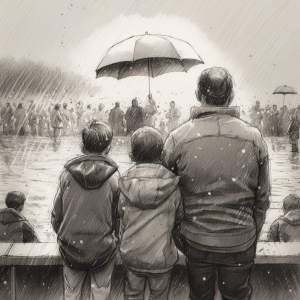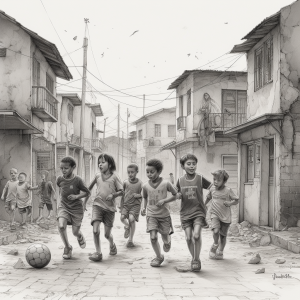In the early days of soccer, going back in time, heading was considered to be of minor importance. Most people including parents actually advocated the abolition of heading because they feared that sharp blows on the head might cause brain damage.
Fast forward to today’s game and it is unthinkable that the game could be played without heading. Head work is what separates the great players from the average. Good aerial power through heading will not only score a lot of goals but will also create a lot of goal mouth action. The head is almost used by both defenders and strikers to either save goals or score last minute winners. The aerial game is an important factor in today’s modern game.
Youngsters must be introduced to heading as early as possible, with the object of overcoming a natural fear of the ball making sudden contact with the head. Most children need to be assured that they have nothing to fear. Every player worries about getting hit in the face, even international superstars have been caught looking down at a hard driven ball. The first steps of learning how to head the ball are the most important. Therefore when teaching your players or kids to head the ball, you must exercise patience and perseverance.
Ideally, a slightly deflated ball should be used. It will not hurt as much when it hits the boy on the forehead as compared to a heavy inflated ball. Show the youngster the correct part of the head to use, the forehead. Establish that this is the hardest part of the skull and it will not hurt them if they follow the techniques correctly. Let the pupil place the ball on his forehead while you hold the ball in place.
This way the young child gets accustomed to the ball hitting his forehead. By now the boy’s fears should have been overcome. The next step is to toss a ball gently to him and get him to head it back, using the correct part of the head. Through repetition of this technique, the boy will be more than happy to add this new skill into his bag of tricks. Once the child is convinced that no damage will be done to his face, you can continue to practice and add to this technique.
Once the fear has gone, the boy should be taught the correct way to stand when heading. Basic fundamentals are the same-the body perfectly balanced and both eyes firmly on the ball. A stance like a boxer should be adopted, one foot in front of the other which allows body weight to be transferred by sinking back on the rear foot and coming forward on to the front foot. The arms are spread for balance and used for protection against other players.
One of the most important rules in heading is to never let the ball hit the head. Your head must hit the ball. As the ball comes towards the player, he should sway back on to the rear foot and then jack-knife his body forward to meet the ball. For those physicists out there, your head imparts speed to the ball in the opposite direction to that from which it arrived. Strike the ball as hard as you possibly can, gaining maximum momentum from the head.
There are 2 basic methods of jumping for the ball, the standing jump and the running jump. A jump off both feet from the standing position is particularly useful when a player is closely marked. Should he be under pressure from opponents, he will have little opportunity to make a running jump. In this example, the lower body should be rotated towards the direction in which the ball is to be propelled, while the shoulders face the oncoming ball. The legs are straddled and the take off is commenced by bending the knees and ankles, while the arms are swung backwards. The actual jump starts from this position. The knees and ankles are straightened and the arms are swung forward to assist in raising the body.
While jumping, the trunk is bent backwards until at the top of the jump, then it snaps forward allowing the forehead to punch the ball. As the player lands on the ground, he straddles the legs, bends the knees and ankle joints and spreads his arms sideways to maintain balance.
Heading Exercises
Before committing to these exercises, make sure your body is warmed up and ready to go. Roll the head on the shoulders, rotating it in both clockwise and anti-clockwise directions. Make sure the head is drawn fully back and pushed fully forward during the stretching exercise. Pull the head back quickly, then roll it forward slowly onto the chest. Repeat this several times.
- Players should perform the standing jump many times over, without using a ball.
- Suspend a ball on a string some 8 inches above the player’s head and have him jump to head it from a standing position.
- The player throws the ball into the air and jumps to head it to a partner about 5 metres away.
- With the help of a partner, have the ball thrown from a distance of about 5 metres, then you head the ball back into the arms of your partner. As you become accustomed to this movement and technique, speed up the movement to ensure an aerobic workout as well.
This post has covered the importance of the soccer header. Although we’ve only talked about heading from a standing jump, stay tuned as I will further investigate the running jump header, the glancing header and the backward header. More to come in the future.



Great guide for younger players; you have covered the most important aspect, getting rid of fear. Players can then develop timing and winning headers.